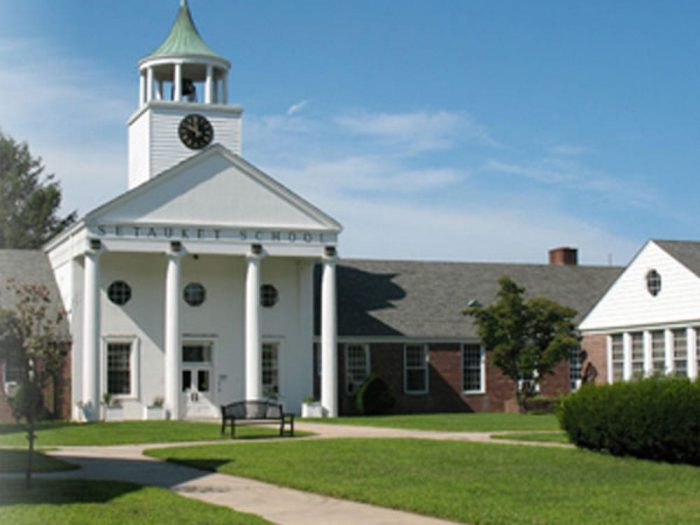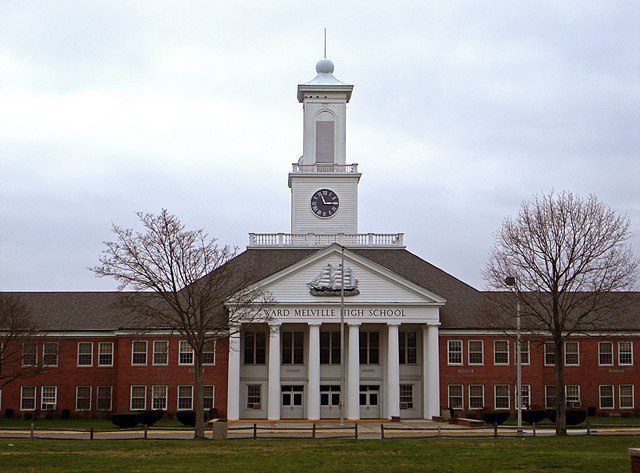By Mallie Jane Kim
Three Village Central School District is on track to restructure its schools as planned in fall 2025, according to superintendent of schools Kevin Scanlon.
The district has been planning to move sixth grade up into the junior high schools to form middle schools and move ninth grade up to form a four-year high school.
Staff teams responsible for planning the changes have been working to prepare what will be needed as far as staffing, facilities, grading and curriculum to accommodate the changes and support kids’ mental health needs during the transition, Scanlon shared at a June 12 Board of Education meeting.
“We’re not done yet,” he said. “Next year is still going to be busy, but I think we’re way ahead of our schedule and on target to move forward.”
The district has already taken into account planning moving-up ceremonies and related activities for both fifth and sixth grades at the elementary schools, as well as eighth and ninth grades at the junior high schools, for the 2024-25 school year since all four grades will be changing schools at once.
One thing still under consideration is the possibility of repurposing one of the five elementary schools in tandem with the change, to address ongoing financial concerns, especially as the schools will no longer house sixth grade. Though the possibility has come up multiple times, the board has not made any substantive moves toward such a decision.
The district also must decide whether to change the names of any of the schools — for example, changing the junior high schools to middle schools.
Some parents and at least one staff member have tried to convince the district to hit pause on the restructuring plan, expressing worry that a change could risk losing what is good about the district.
“Three Village school district has distinguished itself by providing top-notch opportunities for our students across diverse areas, while also fostering nurturing environments during pivotal transitional years,” wrote Gelinas Junior High guidance counselor Anthony Dattero in a March perspective piece in The Village Times Herald. “Our district has maintained its uniqueness for over 40 years, resisting the trend toward common middle school models adopted by other districts.”
District administrators have argued the new structure will bring Three Village into line with the way New York State standards are written and will provide sixth and ninth graders the benefits of the curriculum available in the upper schools.
“We are ready to move forward,” Scanlon said. “This is happening.”
Scanlon indicated the teams will continue to work over the summer and into the fall to make ready the transition.
Start time complications
Secondary school start times after the restructuring are still up in the air, as there is no solution yet for making start times later, something parent advocates have been pushing for over several years, citing mental health and academic costs of having adolescents start school at such early hours.
Ward Melville High School currently starts at 7:05 a.m. and the junior high schools start at 7:40.
“We have to do our very best to make sure we’re not moving grade nine up to an earlier start time, if we possibly can avoid it,” said trustee David McKinnon, referring to the fact that restructuring will bring ninth and sixth grade up to schools that start earlier than the schools that currently house them.
At issue is the tiered bussing system, which allows the district to get by on fewer buses than they would need if all the schools started at the same time.
Each additional full-sized school bus added to the fleet would cost about $105,000, according to estimates by a transportation consultant, called in to help the district figure out the most efficient way to make a change with the lowest price tag.
The consultant shared the results of his assessment at the meeting, but the board did not see an immediately clear solution. Some of the proposed scenarios had elementary schools starting as early as 7:20 a.m. or as late as 10:00 a.m., which would mean dismissal wouldn’t begin until 4:15 p.m.
“Any elementary school that ends later than it is now, is a problem,” said Karen Roughley, who is a longtime advocate of later secondary start times. She added that the early start times would also be a problem.
“The whole point of us moving our high school kids is that we don’t want them there so early and waiting for the school bus when it’s dark,” she said. “I’m not going to have my elementary kindergarteners standing in the dark waiting to get on a bus.”
Some of the proposed scenarios would require adding six new buses to the fleet.
Board members indicated they would continue to work with the consultant to fine-tune his results into realistic proposals they can lay out for the community, possibly in September to make a decision by October.







